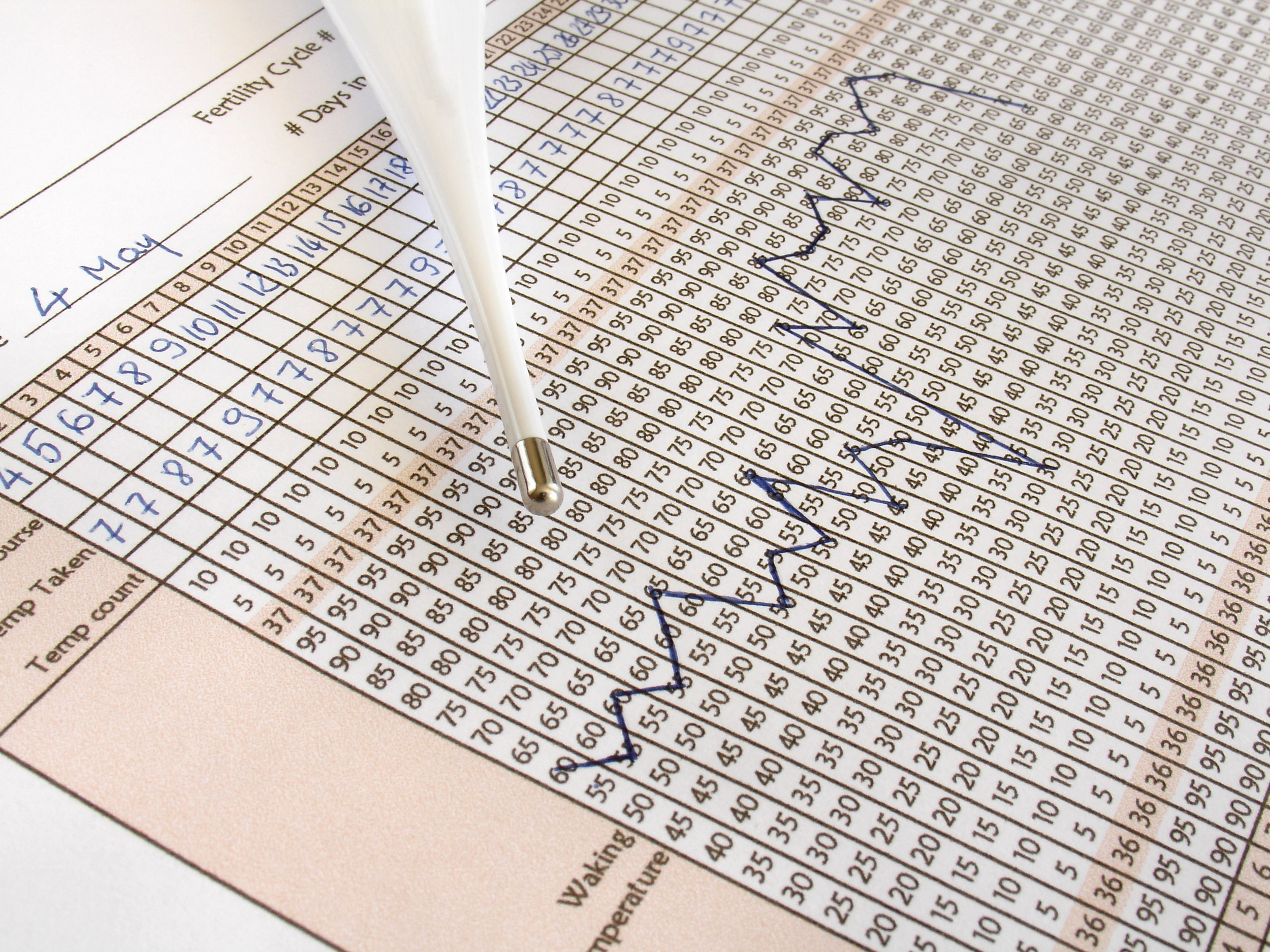Your Toolbox
Photo by Ever/iStock / Getty Images
Basal Body Temperature Chart (BBT)
If you're unsure if you're ovulating, the BBT can be your best friend. It's easy, very inexpensive and can provide some baseline information about your cycle. In very basic terms, the first half of your cycle (Day 1 of your period through ovulation, called the follicular phase) is dominated by estrogen and your temps stay low. About 24 hours (plus or minus 12 hours) following ovulation, your temperature should spike due to a rise in LH and stay high due to the influence of progesterone (luteal phase). Your temperature will decrease again once your period arrives. If you conceive, then temps continue to stay high. BBT charts can help you find out IF you're ovulating, approximately WHEN you're ovulating, and help detect any problems throughout the cycle. For example, late ovulation followed by a short luteal phase may indicate low progesterone levels. From an Eastern Medicine standpoint, these charts can help us determine which phase may be out of balance...follicular phase = yin phase and luteal phase = yang phase (I can explain more on that in person).
How to do it:
Find a BBT thermometer (measures to the hundredths) or an internal sensor, such as OvuSense*
Before getting out of bed or moving around upon waking, take your temperature
Record temperature on paper or one of many apps on your phone
*OvuSense is a sensor that records your core temperature instead of your oral temperature. It’s slightly expensive, but far more accurate and not affected by some of the drawbacks listed below. I don’t receive any compensation for this product, but truly believe it’s extremely useful.
Drawbacks of using an oral thermometer:
It's important to take your temperature at the same time every morning
Fitful sleep, alcohol the night before, illness, and other things can give inaccurate results
Temping can be inconvenient while traveling, especially across time zones or internationally
Not always 100%, but can be useful to verify ovulation
Temping only confirms ovulation after the fact, which means once the spike in temperature occurs, it’s too late to conceive — better for confirmation of ovulation VS prediction of ovulation
Ovulation Prediction Kits (OPK)
There are many different price points and types of OPKs. Some are very inexpensive and only look for a spike in luteinizing hormone (LH), which occurs 24-36 hours before ovulation. Others are more expensive and not only detect a spike in LH, but also detect a rise in estradiol levels to better predict ovulation. Using these kits can help couples time intimacy for the best chance of conceiving.
Using OPKs in conjunction with BBT is incredibly useful. The OPK can show the LH spike, indicating ovulation may occur within 24-36 hours and the BBT will verify ovulation.
Mindset
Anyone who has had difficulty conceiving has no doubt heard “try not to stress about it and it’ll happen naturally!” from well-meaning friends, family and doctors. It is absolutely true that elevated cortisol (the stress hormone) in the body can negatively affect other hormones that are vital to fertility, but trying to conceive is stressful and being told to relax doesn’t help anything. Instead, try to focus on your mindset. Take the challenges that you’ve faced and change your narrative. Turn your internal dialogue around by focusing on the positives. This doesn’t have to involve meditation or visualization practices (although those certainly don’t hurt), but each time a negative thought crosses your mind about your &/or your partner’s body/inability to conceive, consciously stop yourself and reset that thought into one that recognizes your strengths & has gratitude for all your body does for you! It’s a simple, quick practice that can result in huge rewards.




